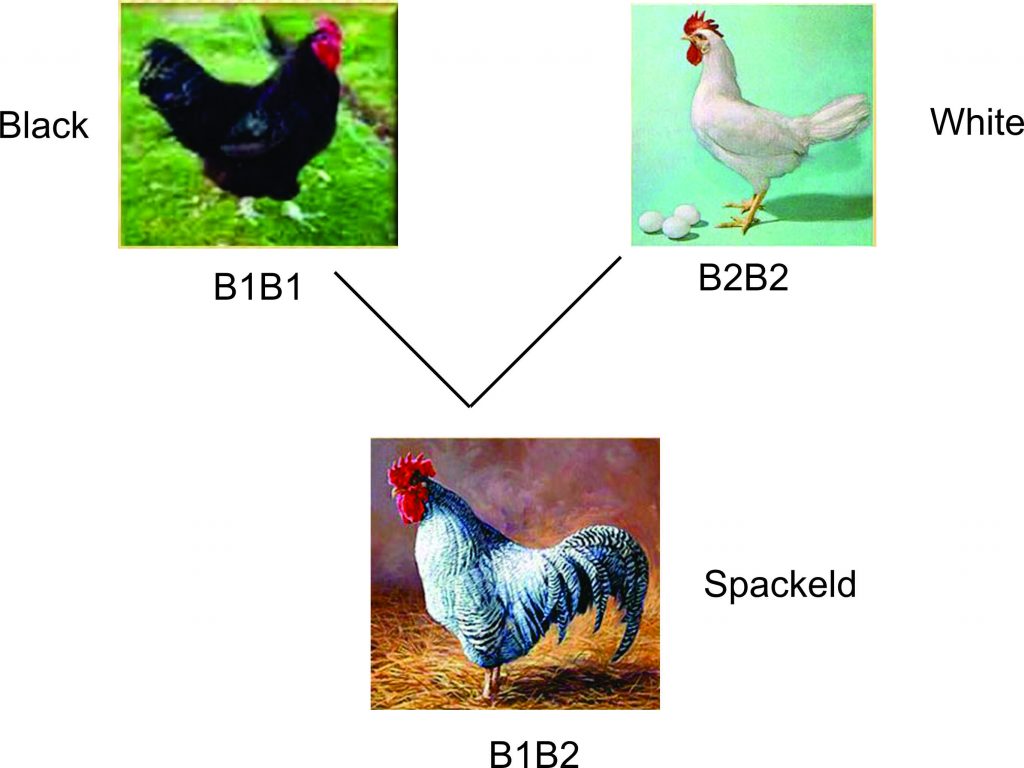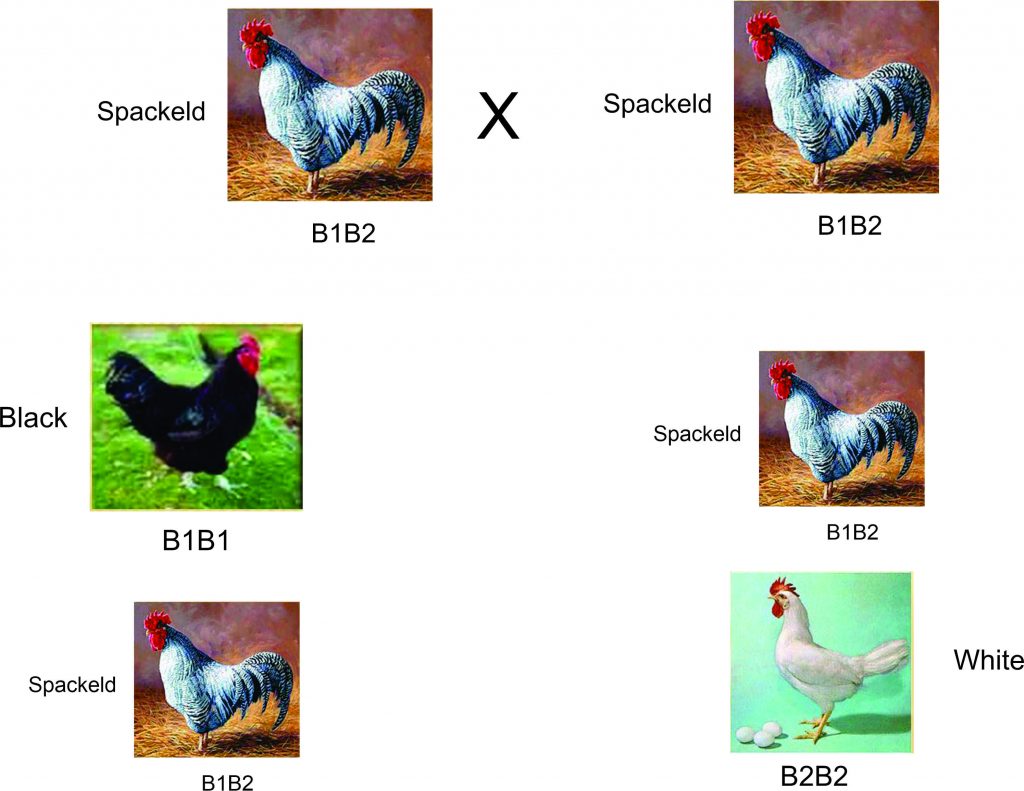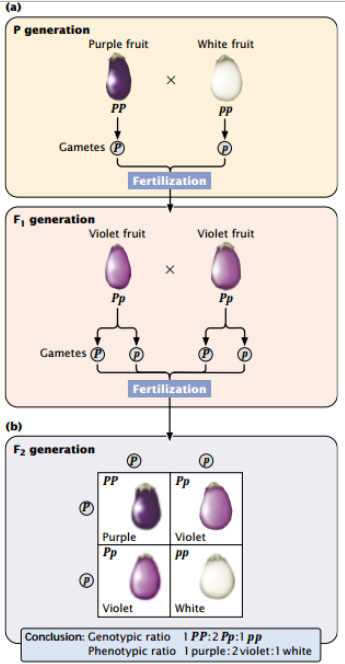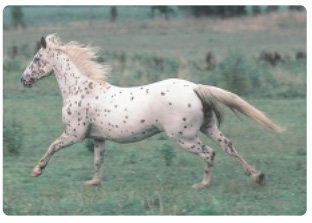The seven characters in pea plants that Mendel chose to study extensively all exhibited dominance, but Mendel did realize that not all characters have traits that exhibit dominance. He conducted some crosses concerning the length of time that pea plants take to flower. When he crossed two homozygous varieties that differed in their flowering time by an average of 20 days, the length of time taken by the F1 plants to flower was intermediate between those of the two parents.
” When the heterozygote has a phenotype intermediate between the phenotypes of the two homozygotes, the trait is said to display incomplete dominance. “
Egg plant (Brinjal) colours
Incomplete dominance is also exhibited in the fruit colour of eggplants. When a homozygous plant that produces purple fruit (PP) is crossed with a homozygous plant that produces white fruit (pp), all the heterozygous F1 (Pp) produce violet fruit.
When the F1 are crossed with each other, of the F2 are purple (PP), are violet (Pp), and are white (pp),
This 1:2:1 ratio is different from the 3:1 ratio that we would observe if eggplant fruit colour exhibited dominance. When a trait displays incomplete dominance, the genotypic ratios and phenotypic ratios of the offspring are the same, because each genotype has its own phenotype. It is impossible to obtain eggplants that are pure breeding for violet fruit, because all plants with violet fruit are heterozygous.
Colour in chickens
Another example of incomplete dominance is feather colour in chickens. A cross between a homozygous black chicken and a homozygous white chicken produces F1 chickens that are gray. If these gray F1 are intercrossed, they produce F2 birds in a ratio of 1 black: 2 gray: 1 white.


Leopard white spotting in horses
is incompletely dominant over unspotted horses: LL horses are white with numerous dark spots, heterozygous Ll horses have fewer spots, and ll horses have no spots.

